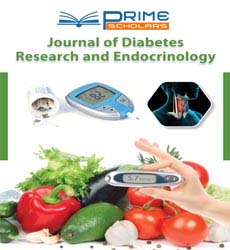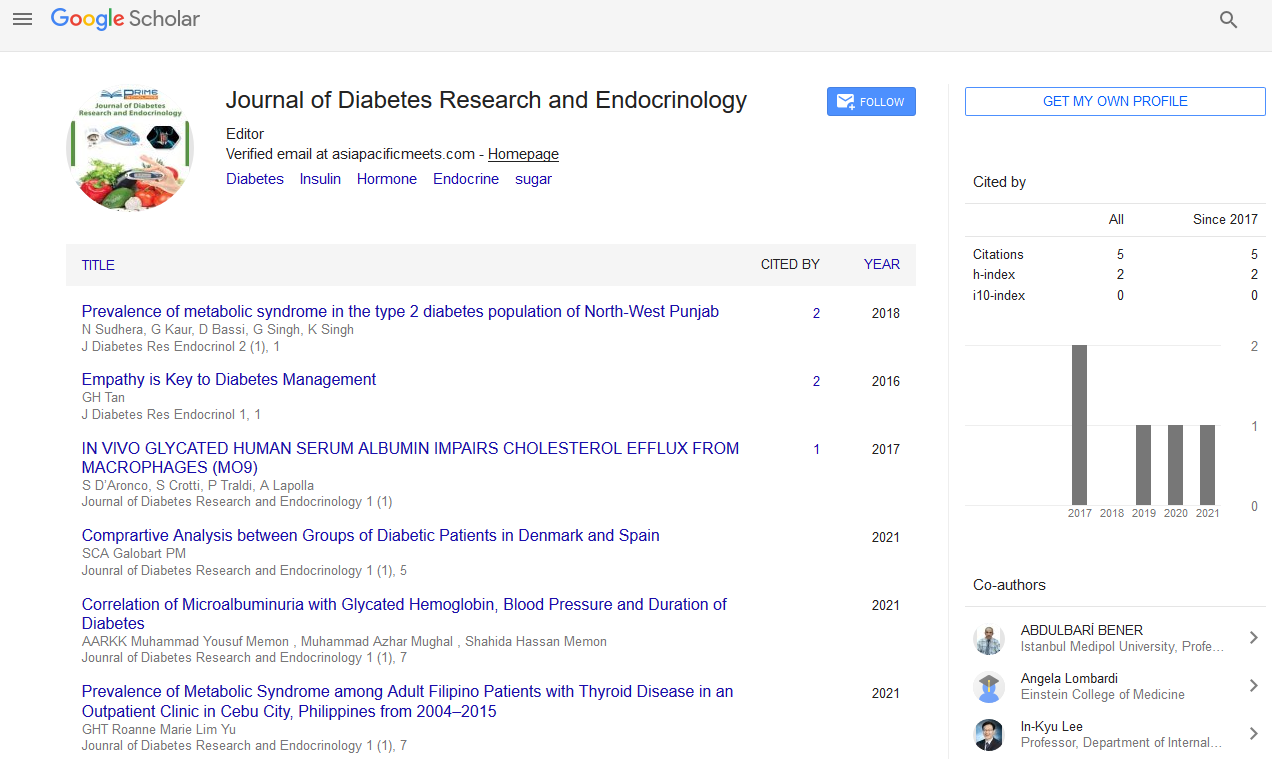Opinion - (2022) Volume 6, Issue 1
A Brief Overview on Type 2 Diabetes Mellitus
1Department of Diabetology, University of Edinburgh, UK
*Correspondence:
Arthur Kaser, Department of Diabetology, University of Edinburgh,
UK,
Email:
Received: 03-Jan-2022, Manuscript No. IPJDRE-22-12590;
Editor assigned: 05-Jan-2022, Pre QC No. IPJDRE-22-12590(PQ);
Reviewed: 19-Jan-2022, QC No. IPJDRE-22-12590;
Revised: 24-Jan-2022, Manuscript No. IPJDRE-22-12590(R);
Published:
31-Jan-2022, DOI: 10.36648/09768610.6.1.001.
Introduction
Diabetes mellitus (DM) is a metabolic disorder that is characterized
by the chronic hyperglycemia that results in insulin secretion,
insulin resistance and insulin action. It may also have
the effects in metabolic abnormalities like carbohydrates, lipids,
and proteins. Low levels of this insulin may target the insulin
resistance of targeted tissues; Skeletal muscle (which helps
in promoting the energy or other fuel sources in the body), adipose
tissues (this is an endocrine organ which can influence
both the lipid and glucose metabolism), these can promote the
synthetic lipid metabolism after the releasing of insulin signaling[
2]. When the level of insulin receptors are lesser or extent
signal transduction system or these effector enzymes or any
genes are responsible for those metabolic abnormalities. Increasing
in the levels of blood glucose in the body leads to the
serious damage to the kidneys, heart, blood vessels and eyes.
Description
Insulin mainly secreted from the β cells of islets of Langerhans
of pancreas. These pancreatic β cells dysfunctions is an important
role in the diabetes mellitus Type I and II. Insulin is synthesized
by the preproinsulin (biologically inactive precursors to
the biologically active sites in insulin) and later on it process to
proinsulin (substance that is converted to the insulin).
Type I: It is an autoimmune disease which is characterized by
insulin deficiency and that results in hyperglycemia. Primarily it
is found in young adults or young age persons with the insulin
deficiency. Over the past 25 years diabetes is rapidly increasing
in India. Type 1 is a condition which the body produces less
amount of insulin or no insulin. Researchers found that according
to our own body immune system type 1 will not occur more in humans. One more important reason is due to genetics and
climatic conditions there is no chance of observing type I diabetes.
Type II: In worldwide Approximately 400 million people are suffering
from diabetes. In recent surveys says that around 200
million are undiagnosed diabetes, but still having with that disease
conditions and symptoms. this disease is associate with
high mortality and morbidity rate.
Conclusion
Difference between Type I and Type II: In type I cells attacks the
body and body does not produce sufficient insulin. Whereas in
type II the body is not able to produce insulin properly. Type I;
no particular symptoms, type II; some risk factors and some effects
we can able to identify. Symptoms can be seen more easy
and quickly in type I, delay and difficult to slow observation in
type II, we can manage type I by taking the insulin to body, and
that is the only way to manage but in type II there are so many
ways e.g., insulin, medication, exercise, diet plan. At last there
is no cure for this type I; type II can be cured and there are
many evidenced based cases for prevention and cure.
Patients who have recently been diagnosed with diabetes
should enrol in a comprehensive diabetes self-management
education programme that includes individualised instruction
on nutrition, physical activity, metabolic control, and avoiding
complications. In clinical trials comparing diabetes education
to usual care, patients who received the diabetes education
intervention had a small but statistically significant reduction
in A1C. The use of mobile phone interventions for diabetes education
was found to be effective in lowering A1C in two meta-
analyses (-0.5 percentage points)
Copyright: This is an open access article distributed under the terms of the Creative Commons Attribution License, which permits unrestricted use, distribution, and reproduction in any medium, provided the original work is properly cited.

